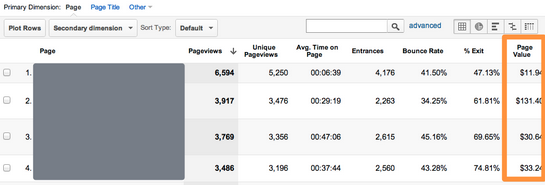There is a way to track this!
“Bounce rate” in Google Analytics is one of the key metrics that helps to evaluate the quality of your traffic. “Bounce” happens when the visitor exited the website right from the landing page, without going to any other page. This is a great indication on how relevant the content was for the user and how engaged they were with your website.
While working perfect for most websites, there are categories of sites where this metric is not enough.
Imagine you’re promoting a blog post that describes all the benefits of your company. The visitor might read the whole post and remember your company and products really well - they might even go to search for your product on one of the search engines straight away. However, since the visitor only looked at 1 page (exactly where the blog post is) they will be recorded as bounced visitor.
Another example if you have a description of the product right on the landing page, and your phone number on the same page. The visitor might study the description and call straight away - again, they will be recorded as a bounced visitor, as only 1 page was viewed. There are many more examples, and even traditional websites may benefit from the method described below as opposed to the standard bounce rate.
There is a solution to this - something that we call “Adjusted bounce rate”. You implement a small tweak to your Google Analytics code, which executes an event when a user has spent over a certain amount of time on the webpage. Depending on the website, the time can range from 10 seconds to few minutes - you should decide for yourself the amount of time you consider the user to be sufficiently engaged with your website or product.
Once the event is executed, the visitor is no longer counted as “bounce,” even though no additional pageview is recorded. This will mean your bounce rate will show users who have not spent a required “minimal time” on your website - the ones who have really bounced. Here is a modification to the Google Analytics code that you need to make (on the example of the latest, asynchronous code):
<script type="text/javascript">
var _gaq = _gaq || [];
_gaq.push(['_setAccount', 'UA-XXXXXXX-1']);
_gaq.push(['_trackPageview']);
setTimeout("_gaq.push(['_trackEvent', '15_seconds', 'read'])",15000);
(function() {
var ga = document.createElement('script'); ga.type = 'text/javascript'; ga.async = true;
ga.src = ('https:' == document.location.protocol ? 'https://ssl' : 'http://www') + '.google-analytics.com/ga.js';
var s = document.getElementsByTagName('script')[0]; s.parentNode.insertBefore(ga, s);
})();
</script>
The setTimeout function is the one that does the trick here, and you can set it up to whatever delay you wish (in this case, it is 15 seconds).
Moreover, since the event is created once 15 seconds lapse, you can define this event as a goal in Google Analytics, and even import this goal as a conversion to AdWords, provided the conditions are met.
We hope this small fix will allow you to track and understand the users’ behavior and quality of the traffic coming to your website more accurately, and make more informed decisions. One thing website owners should be vary of, though, that not only the function may slow down the users' experience, even insignificantly, but will also increase the volume of hits your site sends to Google Analytics, which might bring your usage over the limit (currently set at 10 mln hits per month). As such, this fix should only be applied when necessary and justified by the concept of the website and the landing pages.
Posted by Alexey Petrov, Google Analytics Insights Team




